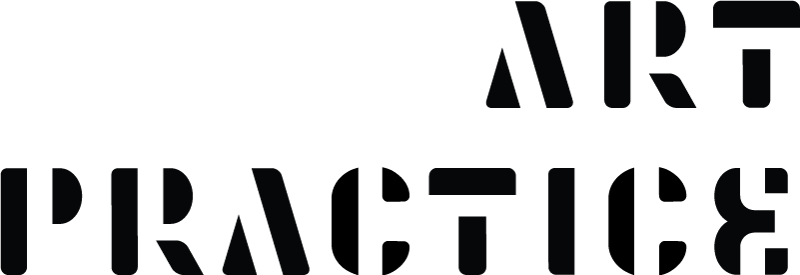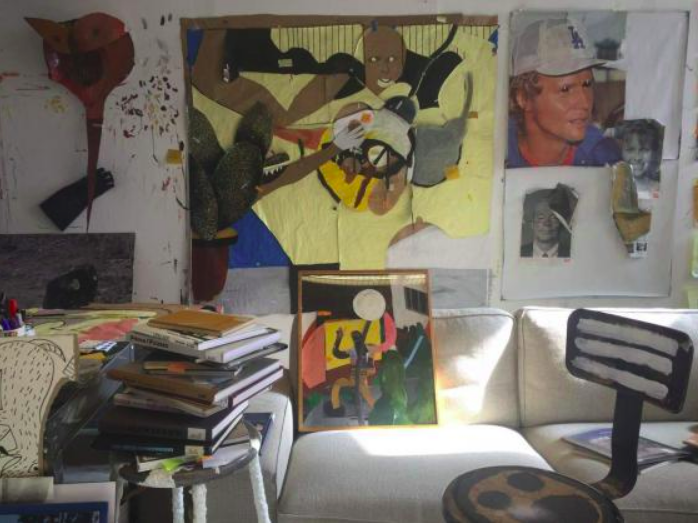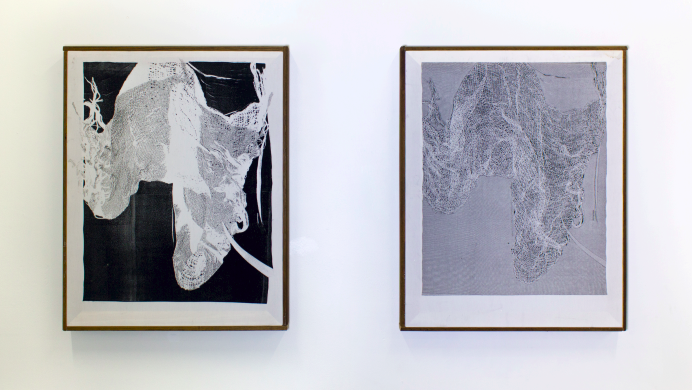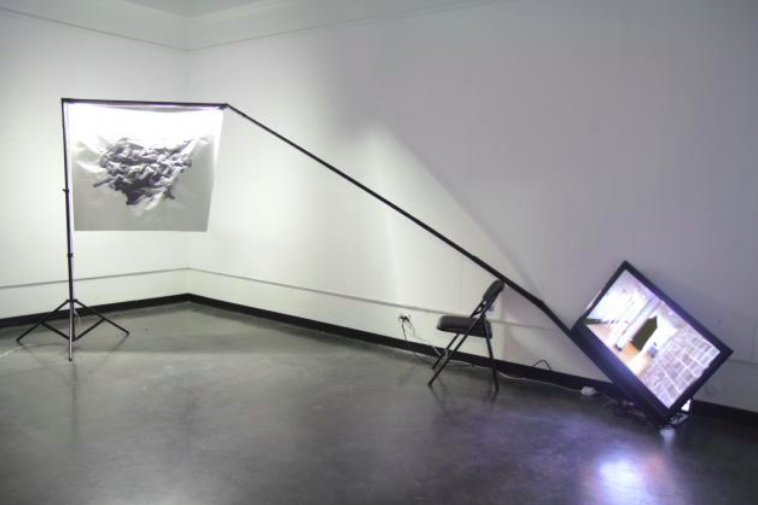Heesoo Kwon [MFA 2019], 탈피를 위한 의식 -A Ritual for Metamorphosis (detail), Installation with digitally printed silk, ceramic, and animation, 2019
ARTIST TALKS
The 52nd UC Berkeley MFA Show: Six Artists Discuss Process, April 15, 2022.
EXHIBITION CATALOGS
First Year MFA Shows:
Collapsense, the First Year MFA exhibition, Worth Ryder Art Gallery, Spring 2024
Cacophonies of Resistance, the First Year MFA exhibition, Worth Ryder Art Gallery, Spring 2023
Optimal Conditions, the First Year MFA exhibition, Worth Ryder Art Gallery, Spring 2022
When Things Get Back to Normal, the First Year MFA exhibition, Worth Ryder Art Gallery, Spring 2021
BAMPFA Exhibit Catalogues:
View MFA alumni and current MFA students
MFA Degree
Graduate Program Co-Directors
Professor Asma Kazmi, akazmi@berkeley.edu and Professor Anne Walsh, agwalsh@berkeley.edu
MFA Application Deadline: Sunday, December 15, 2024 (8:59pm PT)
To start your application, head to the UCB Graduate Division Online Application portal at https://gradapp.berkeley.edu/apply/
MFA Application Information Session:
If you are interested in applying to our program and have questions, email Asma Kazmi or Anne Walsh. We hosted 2 Graduate Program Application Information Sessions online on Wednesday, October 2 and November 7, 2024 from 5:00-6:30 PM. Here is a link to the slides that were presented and video recording of one information session where you can learn about our program, facilities, curriculum, and answers to common applicant questions. Check the website and follow us on Instagram (@ucberkeley_artpractice) for more information.
Overview
The Department of Art Practice at UC Berkeley offers a two-year Masters of Fine Arts Degree headed by our faculty of internationally-recognized artists, and enriched by a roster of affiliate faculty from multiple departments across campus. We offer professional art training in the context of a rich and distinguished liberal arts and sciences university.
UC Berkeley’s Art Practice MFA program is committed to artistic innovation and intellectual rigor. The program aims to broaden the productive, conceptual, and critical faculties of students in their pursuit of careers as professional artists. Our cohort of graduate students is intentionally intimate: we graduate 6 students per year, and our program is multi-disciplinary. Our low faculty-student ratio facilitates regular one-on-one instruction. Group critique and peer review are integral components of the program. We encourage students to explore a wide range of media, and to pursue electives taken departments outside Art Practice, as well as within our own studio and critical theory courses. Distinguished visiting artists provide a supplementary lecture and studio visit curriculum to MFA students.
The UC Berkeley Art Practice MFA culminates in an MFA thesis show at the internationally recognized Berkeley Art Museum and Pacific Film Archive (BAMPFA).
Curriculum
Rooted in peer-to-peer discussion, the curriculum of the Art Practice MFA program is built on a core set of required classes: the Critique seminar, the Theory and Criticism seminar, and Independent Study with chosen or assigned faculty. The seminar courses are rotated amongst core faculty, so that in your four semesters, you will experience four different instructors leading the critique seminar, and two instructors leading the theory and criticism seminar, as this course is offered only in the fall semester. Students also take electives throughout their first year, (unless they are teaching Art 8, in which case they may defer these electives to the following or previous semester). These electives can be any upper-division or graduate level course, campus-wide. MFA students have enrolled in courses offered in Physics, Asian Studies, Rhetoric, Film and Media, Peace and Conflict Studies, Art History, Anthropology, Music, Environmental Science, Botany, Mathematics, Middle-Eastern Studies, Religion, Classics, English, Architecture, Philosophy, Engineering, and Theatre, Dance and Performance Studies.
Studio view of Xandra Ibarra’s [M.F.A. 2020] studio at the Richmond Field Station, with works in progress.
Students test ideas and work in a wide range of media and disciplines, which include but are not limited to broadly defined areas of painting, drawing, sculpture, photography, video, printmaking, digital and new media, performance, and social practice. Throughout both years of the program, students participate in an Independent Study course, in which they make their own work while regularly meeting with a faculty advisor about their progress.
In the second and third semesters of their time in the MFA program, students in good standing and who have shown an interest in teaching may have the opportunity to teach the undergraduate foundation course Art 8: Introduction to Visual Thinking as Graduate Student Instructors (GSI's). More information can be found here.
In both years of the program, students participate in MFA gallery shows. Students present their second year Thesis in the Berkeley Art Museum and Pacific Film Archive (BAMPFA) at the end of the Spring semester.
The department’s faculty consists of internationally established artists. The program emphasizes creative research and material practices within a highly rigorous conceptual and critical approach, and is designed to prepare students for a professional exhibiting career and for teaching at the college level. The curriculum emphasizes the richness of UC Berkeley’s broader research community, and close working relationships with faculty. Opportunities exist for assisted and faculty-accompanied travel abroad.
We offer our MFA students professional development support, including privileged applicant status to a number of studio residency programs and grant programs. In consultation with a faculty advisor, each student will select and work closely with a thesis committee consisting of departmental and external members.
We offer our students semi-independent studio facilities, with each student matched to a studio that best suits their work. Twelve studios are located off-campus, at the Richmond Field Station.
In addition to exhibiting in the Art Practice department’s Worth Ryder Art Gallery, MFA students are assisted in displaying their work in an array of regional venues. The second-year MFA Show is held at the Berkeley Art Museum/Pacific Film Archive, and students work closely with museum curators and staff to select and install their work.
MFA Degree Resources
Financial Support
California residents (in-state students): 100% of enrolled MFA students receive financial support equivalent to both years of their MFA studies’ in-state tuition from Art Practice.
UCB offers additional kinds of financial assistance for graduate students. All students also receive moderate materials grants for their studio practices. Merit-based support is available in the form of fellowships, teaching assistantships, and modest departmental awards. Financial awards are offered to the most outstanding eligible new and continuing students in the MFA program. Award recommendations are made by faculty. Factors considered include creative work, potential, and, in some cases, financial need. For Graduate Student Instructor (GSI) positions, special abilities and prior experience with teaching are factored into the decision, but are not required to receive an assistantship.
The UC Berkeley Financial Aid and Scholarships Office administers financial support for eligible US citizens and permanent residents based upon need. For graduate students, need-based financial aid is awarded in the form of loans and work-study.
Extramural fellowships also are made available by many off-campus agencies and foundations. Applicants should contact the funding organizations directly for information regarding extramural fellowship opportunities.
Facilities Access
All art facilities including the Ceramics Studio, Printmaking Studios, Sculpture Studios, and Digital Media Labs are freely accessible to MFA students normally. During COVID-19, access is extremely limited and regulated on a case-by-case basis.
MFA Program Application information
Admission to the department is based on acceptance by the UCB Graduate Division and a faculty review of complete applications.
Applicants must have a bachelor's degree from an accredited institution, with a minimum GPA of 3.0 for the last two years of upper-division coursework. For the MFA degree, applicants are evaluated on their creative work, and all applicants must submit a portfolio of work consisting of a maximum of twenty still images.
Three letters of recommendation are required. The Graduate Record Examination (GRE) is not required. For the MFA program, applicants with a bachelor's degree in art are preferred, but those who hold a bachelor's degree from an accredited institution with only some previous study in art may be admitted on the basis of a review of their work.
MFA Application Deadline: Sunday, December 15, 2024 (8:59pm PT)
To start your application, head to the UCB Graduate Division Online Application portal at https://gradapp.berkeley.edu/apply/
PORTFOLIO REQUIREMENTS
Still Images in digital format (REQUIRED FOR ALL APPLICANTS) All applicants must submit a portfolio of work consisting of a maximum of 20 still images, and not fewer than 15. When uploading images, applicants will be asked to provide the title, year, medium, and size for each artwork. Applicants submitting images documenting installation, performance, and project-based work should also include brief descriptions.
Applicants whose work is time-based should submit stills and/or performance documentation as images, in addition to submitting time-based media files (see below).
Time-based work (IN ADDITION TO STILL IMAGES, AS APPROPRIATE) Applicants with time-based work must upload media (up to four files maximum) in addition to their still images. For each submitted file include the title, year, duration of the work (in size field), and a brief description. In most cases, no more than 12 total minutes of time-based work will be viewed. Therefore, to best represent your practice, submit excerpts with running times of three minutes or less. The combined total running time of the four files may not exceed 12 minutes.
In the Graduate Division Application > SUPPORTING MATERIALS area, you have the opportunity to supply a “Sampling of Relevant Written Work.” Please use this section to submit a short statement about your artwork. The statement should be 250-500 words. This is not required by the graduate division, but it is very helpful for faculty evaluating of your portfolio.
GRADUATE DIVISION REQUIRED STATEMENT INFORMATION
The Graduate Division requires two written statements:
Statement of Purpose
The statement of purpose is an integral part of your application for graduate admission and consideration for merit-based financial support. It is used to understand your academic interests, and to evaluate your aptitude and preparation for graduate work, as well as your fit with the proposed program of study. It is also used to assess your ability to write coherent and convincing prose. Instructions: Please respond to the following. Your statement can be up to 500 words in length (approximately 1-page, single spaced, using 1-inch margins and 12-point font). You do not need to answer every question; focus on the elements that you feel are most relevant to your candidacy.
What is your purpose in applying for graduate study in your specified degree program?
Describe your area(s) of interest, including any subfield(s) or interdisciplinary interests.
What experiences have prepared you for advanced study or research in this degree program? What relevant skills have you gained from these experiences?
Have your experiences led to specific or tangible outcomes that would support your potential to contribute to this field (examples: performances, publications, presentations, awards or recognitions)?
What additional information about your past experience may aid the selection committee in evaluating your preparation and aptitude for graduate study at UCB? For example, you may wish to describe research, employment, teaching, service, artistic or international experiences through which you have developed skills in leadership, communication, project management, teamwork, or other areas.
Why is UCB’s graduate program to which you are applying is the best place for you to pursue your academic goals? We encourage you to indicate specific research interests and potential faculty mentors.
Personal Statement
The Personal Statement is an opportunity for you to provide additional information that may aid the selection committee in evaluating your preparation and aptitude for graduate study at UCB. Instructions: Please respond to one or more of the following prompts. Your statement can be up to 500 words in length (approximately 1-page, single spaced, using 1-inch margins and 12-point font).
Are there educational, personal, cultural, economic, or social experiences, not described in your Statement of Purpose, that have shaped your creative development? If so, how?
Have any of these experiences provided unique perspective(s) that you would contribute to your program, field or profession?
Describe challenge(s) or barriers that you have faced in your pursuit of higher education. What motivated you to persist, and how did you overcome them? What is the evidence of your persistence, progress or success?
How have your life experiences and educational background informed your understanding of the barriers facing groups that are underrepresented in higher education?
How do you intend to engage in scholarly discourse, research, teaching, creative efforts, and/or community engagement during your graduate program that have the potential to advance diversity and equal opportunity in higher education or in the arts?
How do you see yourself contributing to diversity in your profession after you earn your advanced degree at UCB?
Artists’ Statement
The Artist’s Statement describes your motivations to take on the role of an artist, and the objectives you seek to achieve through your creative work. While the statement of purpose describes similar themes specifically related to why you want to study at UC Berkeley, your artists’s statement gives you a chance to articulate motivations and objectives in art terms, independently of the University setting.
Graduate Communications
Current MFA students received regular Graduate Communications emails. These emails include updates about important dates, grant opportunities, calls for proposals, and graduate news. To sign up, please contact Asma Kazmi.
Graduate Handbook
For enrolled students, the Graduate Handbook page offers forms, rules, regulations, maps and other resources related to the Richmond Field Station studios, the VR Suite, the Garron Reading Room, the Art Practice workshops for Ceramics, Digital Media, Printmaking and Sculpture.
For more information and online application, visit the Art Practice MFA Graduate Division page.

![Heesoo Kwon [MFA 2019], 탈피를 위한 의식 -A Ritual for Metamorphosis-, (detail), Installation with digitally printed silk, ceramic, and animation, 2019](https://images.squarespace-cdn.com/content/v1/5c097a131aef1dd14490bf62/1570495817292-HQYJE1W2I4281S20D5TN/leymoosoom+BAMPFA.jpg)





![Studio view of Xandra Ibarra’s [M.F.A. 2020] studio at the Richmond Field Station, with works in progress.](https://images.squarespace-cdn.com/content/v1/5c097a131aef1dd14490bf62/1551310838272-G0GGAQG81ADDD6HT7WYJ/IMG_20181211_125332.jpg)